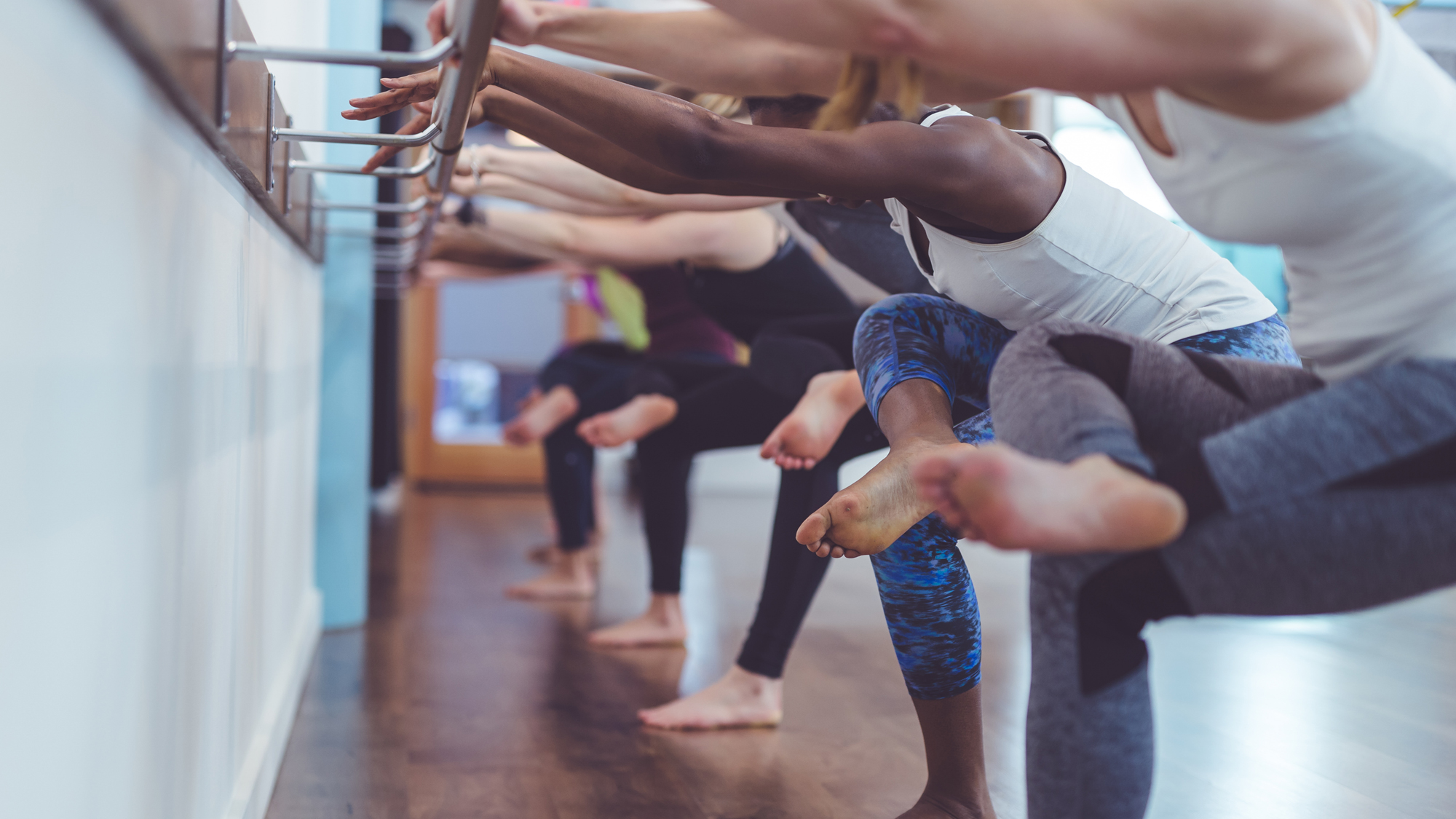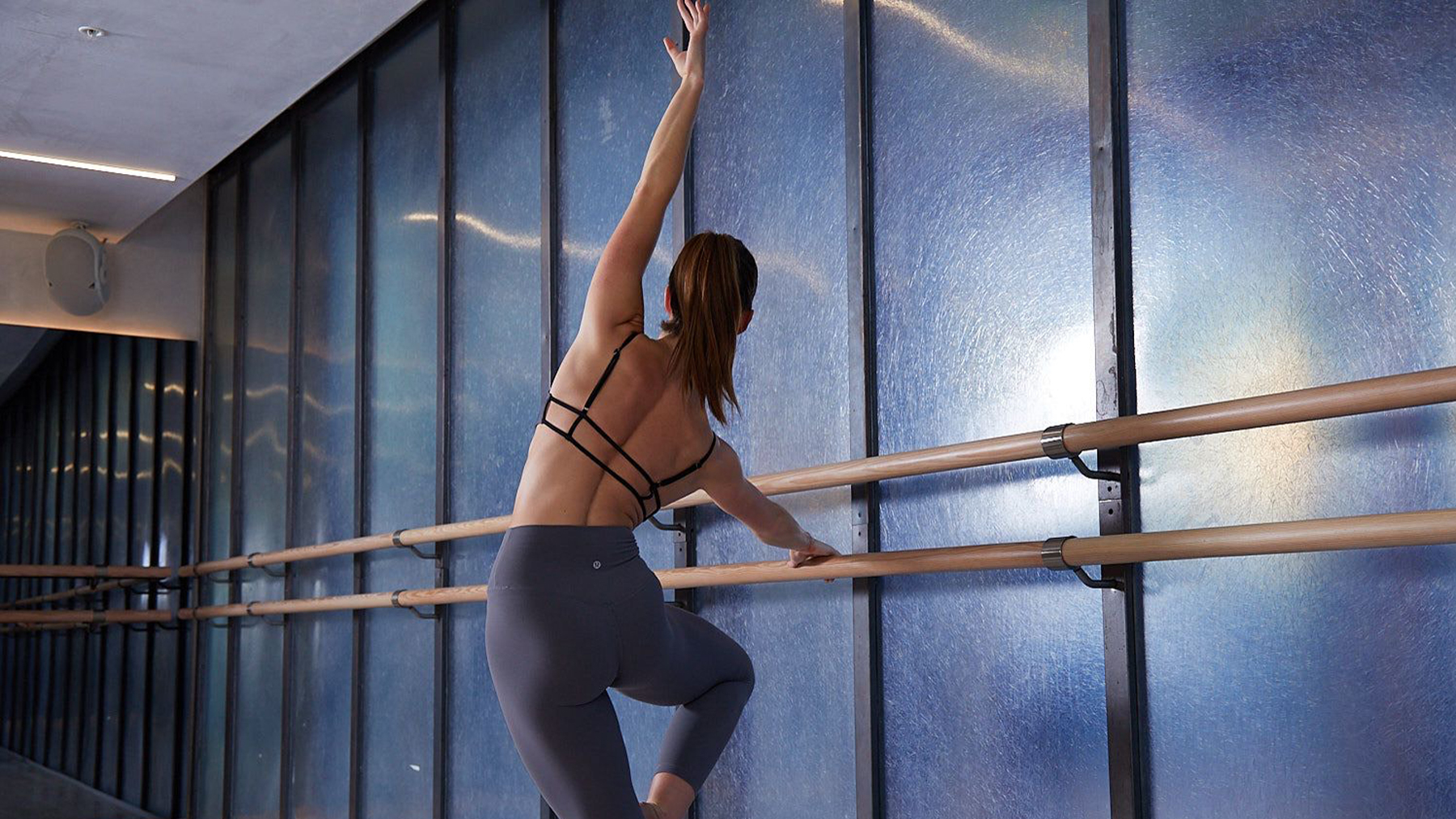Why barre is a perfect high-intensity, low-impact workout – and how to do it at home
Using a barre is an alternative way to workout and we have this guide to show you how to do it at home


When gyms shut last year and we were all stuck at home, many of us got into boot-camp style home workouts, a form of high-intensity interval training requiring minimal-to-no equipment. However, almost two years on, you are probably looking for some variety in your home workouts. We recommend trying some barre.
It turns out that the ballet barre isn’t exclusive to dancers: barre is an excellent way to get a strength-based workout that's both high-intensity and low-impact, without requiring any tools such as the best kettlebell or best adjustable dumbbells. All you need is the edge of a surface you can hold on to between waist and chest height, such as a kitchen counter, table or the back of a chair.
A workout using a barre, or an at-home equivalent, involves the same movements that you would find in many other workouts, such as squats and lunges. Rachel Lopez, a Barre trainer at BLOK says, “The only difference between Barre and any other strength class is how it's programmed and the equipment we use. Barre has higher reps, with less weight, but fundamentally the movements are the same.”
The cross-discipline style workout is meant to be really great for beginners. It works the core, glutes and upper body, and people find they get a really good insight into how the body moves and responds to strength-based movements.
For anyone recovering from an injury, barre workouts are ideal since they are low impact and steady paced.

The cross-discipline style workout is meant to be really great for beginners. It works the core, glutes and upper body, and people find they get a really good insight into how the body moves and responds to strength-based movements.
For anyone recovering from an injury, barre workouts are ideal since they are low-impact and steady-paced. You're also holding on to an additional surface for stability, making these exercises perfect for those with balance issues or active seniors.
Start your week with achievable workout ideas, health tips and wellbeing advice in your inbox.
Lopez explained to us that a barre workout can be done anywhere using any of the following: the back of a chair, staircase on a landing, the railings of your balcony, the bed frame, the edge of a heavy chest of drawers or cabinet or a kitchen counter. It will also help to have a best yoga mat under your feet if you are trying this at home.
So, once you have found a suitable ‘barre’ in your home grab a mat and try out the three exercises listed below, recommended by Blok trainer, Rachel Lopez.
Three exercises to complete your own barre workout at home
- Sumo squat with heel lifts - Taking the feet out nice and wide, wider than your yoga mat, and allow the toes to turn out naturally. Dropping your pelvis straight down the centre, knees over toes, to just above knee height, take your time lifting the heels off your feet. Either one at a time or both at once. This is for strengthening your calves and feet whilst working the inner thighs and glutes.
- Calf raises with inner thigh squeeze - Place a small cushion, rolled up towel or pilates ball in between your thighs just above the knees. With your feet underneath you, toes parallel, lift the heels at the same time. Don’t drop your ball, continue to squeeze, engaging your adductors as your strengthen your calves and feet. Maintain a straight line up the back of the kegs without bending the knees as you rise up. Remain like this to begin transitioning into the third move.
- Squat pulse - From the last move keep your feet where they are but this time send your glutes back to sit into an imaginary chair. One hand resting on the bar for support if you need. Keep the feet parallel but while your knees are bent into this squat stance squeeze the ball repeatedly with your inner thighs. Amplify this by holding onto the squeeze whilst you pulse up and down one inch at a time through your squat. This works to strengthen your glutes, core, lower back and inner thighs.
Jessica is an experienced fitness writer with a passion for running. Her career in journalism began in local news and she holds a Masters in journalism. Jessica has previously written for Runners World, penning news and features on fitness, sportswear and nutrition.
When she isn't writing up news and features for Fit&Well covering topics ranging from muscle building, to yoga, to female health and so on, she will be outdoors somewhere, testing out the latest fitness equipment and accessories to help others find top products for their own fitness journeys. Her testing pairs up nicely with her love for running. She recently branched out to running 10Ks and is trying to improve her time before moving on to larger races. Jessica also enjoys building on her strength in the gym and is a believer in health and wellness beginning in the kitchen. She shares all of this on her running Instagram account @jessrunshere which she uses for accountability and for connecting with like-minded fitness lovers.
